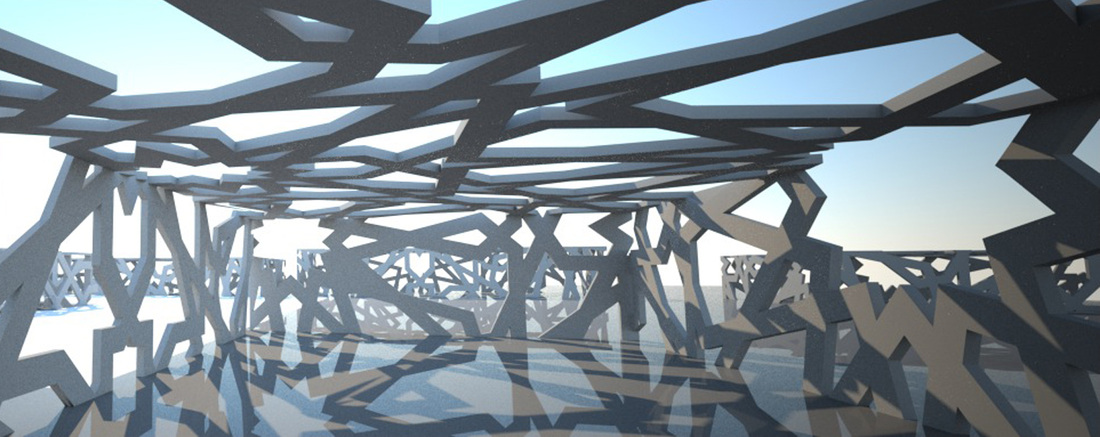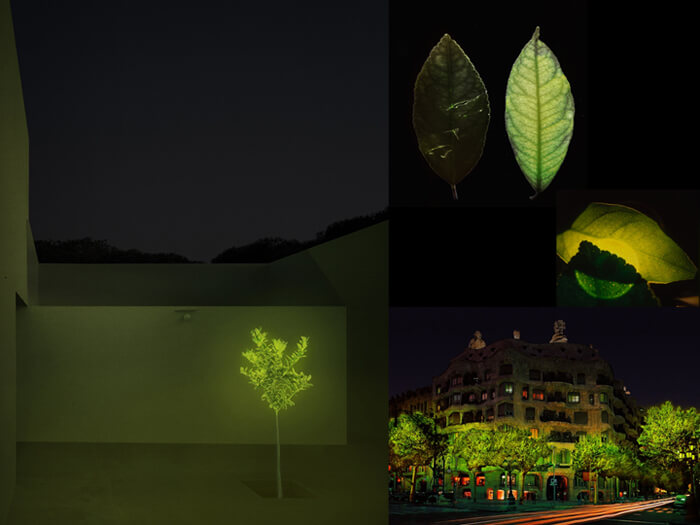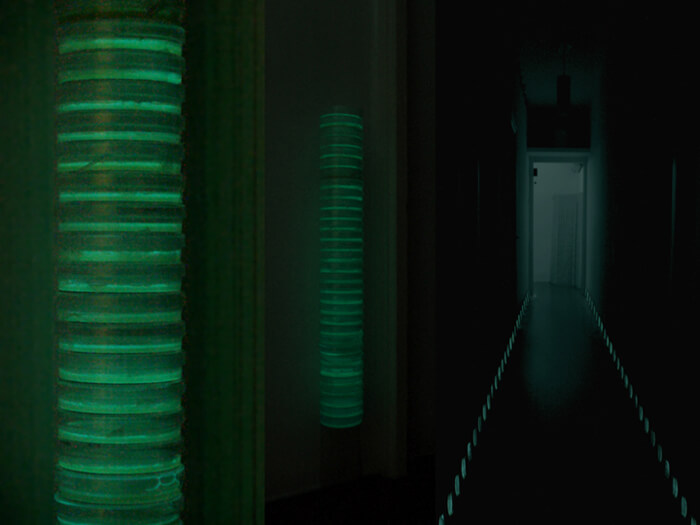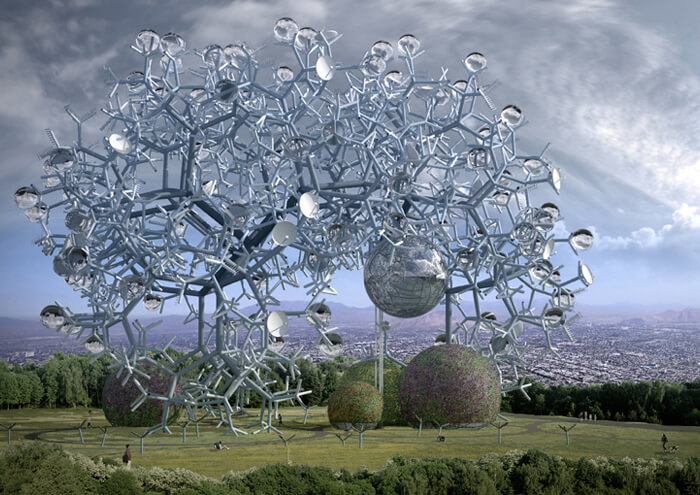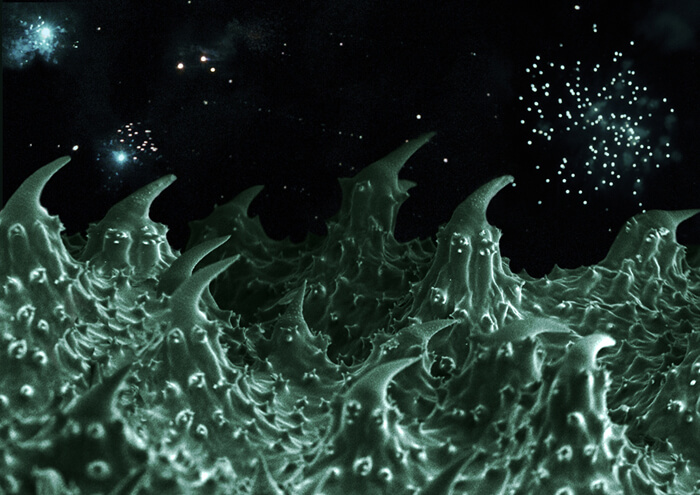Words by Lula Criado
The public understanding of genetics —how we know it or how it interfaces with society— and its application in medicine and science has changed during the last two decades. The development of genetic engineering —the process of adding DNA to an organism— makes that genetics is not only about the study of genomics, genes and genes action but is as well a tool to integrate natural life elements into the architectonic development, among others.
Architect Alberto T. Estévez, fascinated by architecture since the age of 7 and by genetics and biology since he was 10, is blurring the boundaries between architecture, nature and genetics. In 2000 he founded in Barcelona (Spain) the Genetic Architectures Office, an innovative architecture group that encompasses the Genetic Architectures Research Group, the Biodigital Architecture Master‘s Degree and a PhD Program and is challenging the definition of architecture.
Looking at nature for inspiration and blending advances in molecular biology and genetic bioengineering, Estévez created the Genetic Barcelona Project, an interdisciplinary research which involves geneticists, nature and architects.
Deeply connected with the Genetic Architecture Office, the Genetic Barcelona Project incorporates biological processes and explores the creation of bioluminescent plants by adding the gene for bioluminescent protein into the DNA of the trees.
The result is the creation of energy which produces no harmful waste and is changing the definition of conventional processes of design to provoke reflection on society about how to build and illuminate cities more ecologically.
You are an architect working at the intersection of architecture and science. When and how did the fascination with genetics come about?
Well, perhaps it may have to do with the fact that from the age of 10, I wanted to become a scientific biologist, to work with microscopes, etc. Of course, before, since age 7, I wanted to be an architect: what a dilemma! hahaha… So finally, you see, perhaps because of my latent interests, I have finished being an architect who has created a genetics lab, who leads geneticists to architectural objectives, who works with electron microscopy, but who creates architecture.
Although more specifically, I must say that between December 1999 and January 2000, there was one of those typical “informative balls” where the media was increasingly publishing on an issue, “infecting” each other, encouraging seeing others to talk about it. Only in this case, it was about genetics: press, radio and television were very quickly invaded by news and reports on genetics.
Then, watching how genetics offered such a huge field in the world of health and nutrition, I asked myself about the application of genetics also to architecture. So for that, I created then -now already more than 15 years ago- a research group (the Genetic Architectures Research Group), a master’s degree (today called Biodigital Architecture Master’s Degree) and a PhD Program.
After fifteen years of working in biodigital architecture and genetics, what are you currently most excited about Genetic Barcelona Project? What directions do you imagine taking your work in?
In these matters, there is a big difference between what you can get to imagine and, perhaps with good luck, what you can get to do. Because for us now, everything depends on getting the money needed for research, paying the salaries of geneticists, paying the reagents and materials, etc.
Hopefully, someone reading these letters wants to participate in the historical milestones that we propose with genetics and which are to come. We are as when Christopher Columbus was seeking funding for the trip.
Until Isabel, the Spanish queen -as was said, becoming a legend- was fascinated by the project and became personally involved with her jewels in what would become nothing less than the discovery of America. This greatly changed the world, as if we could get the reality of the genetic architecture goals that, after all, are looking to tap the enormous potential offered by nature to ensure the sustainability and future of our blue planet.
For example, we have already opened three ways of bioluminescence in order to get the reduction of energy consumption of night lighting and its consequent pollution drastically. However, the shortage of funds has left us only to do some surveys, not to walk the whole way.
As years ago, we are on the threshold of a fourth way, which can be much more effective. And what’s at the end of the road? The satisfaction of three of the most basic human needs solved in the most natural and sustainable way: natural light, heat and habitat, living without energy consumption and pollution, fueled by the ancestral power offered by nature, that humans are already in the possibility of channelling it thanks to the advances of genetics.
Trees and plants in the streets and homes offer natural light and heat. Living houses, purchased in malls, which can be planted in the ground and that grow alone. It opens an unexplored infinite horizon, fascinating, a whole new world to come.
Your work challenges the definition of architecture. How do you visualize the city of the future?
As a soft and furry city (hairy): a living city. A city that takes every advantage that nature teaches us, how open book, billion years ago. The city of the future will be 50% biological technology and 50% digital technology (100% biodigital).
Living houses that grow alone, trees that give light at night, plants that give warmth in winter: a city that seems more like a forest than a container landscape of a port. After all, where do we prefer to live, in boxes or in trees? We must end with the city-countryside dichotomy: like a dirty oil stain, our cities are destroying nature wherever they grow. But we must be able to get that every human footprint becomes the creator of life.
What is your chief enemy of creativity?
Well, I have no enemies of my creativity… Anyway, like everyone else, we have obstacles to greater deployment of creativity. As the limitations come from being humans: from, for example (something very strange, in fact), that we need sleep, even our personal imperfections.
And time is so limited and goes so fast. And we have to spend on so many things simultaneously. Perhaps others would have enemies of their own creativity, as can be -paradoxically- its own complacency, their vanity, their ego, all for ignoring and not recognising their own limitations, their mental myopia, their shortsightedness, their neuronal rigidity… But, yes, we are all equally affected, mainly not being able to dedicate ourselves more to creating.
You couldn’t live without…
I couldn’t live without believing in the mission that we must play in our short life for the largest living beings colony in the known universe. I couldn’t live without hope for a better future, the sum of each bit that we must bring with our lives. I couldn’t live without loving our work.

